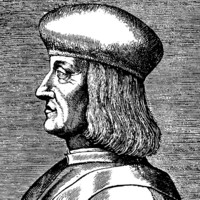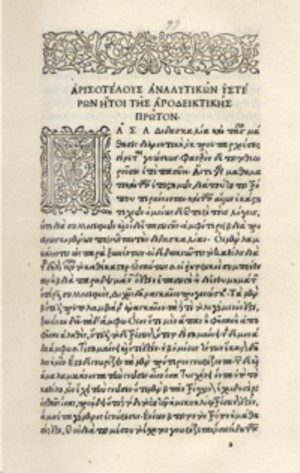If we shall suppose that American slavery is one of those offenses which, in the providence of God, must needs come, but which, having continued through His appointed time, He now wills to remove, and that He gives to both North and South this terrible war as the woe due to those by whom the offense came, shall we discern therein any departure from those divine attributes which the believers in a living God always ascribe to Him? Fondly do we hope, fervently do we pray, that this mighty scourge of war may speedily pass away. Yet, if God wills that it continue until all the wealth piled by the bondsman's two hundred and fifty years of unrequited toil shall be sunk, and until every drop of blood drawn with the lash shall be paid by another drawn with the sword, as was said three thousand years ago, so still it must be said "the judgments of the Lord are true and righteous altogether."But even recognizing that slavery was the sin of the entire nation, it was South Carolina which throughout our history was its greatest champion, and, after its formal abolition, the greatest supporter of the apartheid system which attempted to perpetuate the inferior status of the freed slaves and their descendants.
South Carolina's history of racial hatred perhaps finds its origins in the fact that for most of its history Blacks outnumbered Whites. Starting in 1708 and continuing through secession, there were more enslaved and free Blacks in South Carolina than Whites in every census save one--1790, when, we might think, the balance was affected by the number of slaves who escaped during the Revolution following Britain's promise to free all who joined them. In 1860, 58.6% of the population was Black. It's hard enough for a majority to oppress a minority, and requires an even more savage and onerous regimen for a minority to oppress a majority.
And after the Civil War, Blacks continued to outnumber Whites in every census until 1930, when the Great Migration to the north finally put Whites into the majority.
Whatever the reasons, South Carolina was the fiercest defender of slavery and white supremacy. Not only did it lead the opposition to anti-slavery language in the Declaration, South Carolina also threatened to break up the union over slavery during the debates over the Articles of Confederation. In his new book Quartet, Joseph Ellis tells us that one of the proposals in the so-called "Dickinson Draft" of the Articles was a per capita tax on all the "inhabitants" of a state. South Carolina demanded that slaves be omitted, since they were not inhabitants but property, and stated that if the provision was not changed, "there is an end of the Confederation."
Tragically, both the Articles and the Constitution accommodated slavery. Even the slaveholders among the Founders and the Framers almost universally condemned it, but considered it an economic necessity, a "necessary evil." Starting in about the 1830's, however, a new attitude developed toward slavery. Slavery was not, as the Founders thought, a bad thing. It was in fact a "positive good." The great champion of this view, and the intellectual godfather of both Southern attitudes toward slavery and of states' rights/nullification/interposition (which in effect were one and the same) was John C. Calhoun of South Carolina.
I would argue that Calhoun may be the greatest villain in American history. Certainly he was instrumental in the defense of slavery (the great abolitionist Garrison referred to Calhoun as the "Napoleon of slavery"). Every time we read some defense of the South by modern Sons of Confederate Veterans or the League of the South or the Abbeville Institute, we hear echoes of Calhoun's thinking.
Calhoun died in 1850, shortly after giving his last speech, a speech in which he yet again demanded total Northern acquiesence in slavery as the price for preserving the Union. He asked:
How can the Union be saved? To this I answer, there is but one way by which it can be, and that is by adopting such measures as will satisfy the States belonging to the Southern section that they can remain in the Union consistently with their honor and their safety.And what were these measures?
...conceding to the South an equal right in the acquired territory, and to do her duty by causing the stipulations relative to fugitive slaves to be faithfully fulfilled--to cease the agitation of the slave question, and to provide for the insertion of a provision in the Constitution, by an amendment, which will restore to the South, in substance, the power she possessed of protecting herself before the equilibrium between the sections was destroyed by the action of this government.In other words, not only must the North allow slavery in all the Territories, and Northern states to cooperate in returning fugitive slaves, the North had to shut up about slavery, silence abolitionists. And, of course, the Constitution must be amended to allow Southern states to nullify anti-slavery provisions.
Lincoln's description of this approach, give us everything we want or we'll secede and it will be your fault, is classic: "That is cool. A highwayman holds a pistol to my ear, and mutters through his teeth, 'Stand and deliver, or I shall kill you, and then you will be a murderer!'"
Calhoun got his wish only 10 years later--the South tried to destroy the Union, and South Carolina led the way. The first state to secede, South Carolina issued the following explanation:
A geographical line has been drawn across the Union, and all the States north of that line have united in the election of a man to the high office of President of the United States whose opinions and purposes are hostile to slavery. He is to be entrusted with the administration of the Common Government, because he has declared that that “Government cannot endure permanently half slave, half free,” and that the public mind must rest in the belief that Slavery is in the course of ultimate extinction.The Civil War began some 5 months after South Carolina's secession, and began in South Carolina, when Confederate troops shelled Fort Sumter. That war didn't go so well for the South, and for South Carolina in particular. When Sherman's troops got to South Carolina, they took particular pride in bringing the horrors of war home to those whom they knew had started it.
The history of post-war South Carolina mirrors the history of the rest of the deep South--Klan terrorism, "redemption" of government by getting rid of all Blacks elected, imposition of Jim Crow. In 1948, you may recall, the Democratic convention proposed a Civil Rights plank (the young mayor of Minneapolis, Hubert H. Humphrey, introduced it). South Carolina's Strom Thurmond then led a walkout by the South, and he formed the "Dixiecrat" party. This made Harry Truman's famous victory over Dewey that much harder, and sweeter.
So today the Confederate flag is being lowered at the South Carolina statehouse, after another young South Carolinian lived up to the state's heritage by killing innocent African Americans. We hope this signals a change, that the state which fought to maintain white supremacy for centuries will finally embrace true equality.
I once quoted on this site former South Carolina Attorney General James Petigru's famous comment on the eve of the Civil War--" "South Carolina is too small for a republic and too large for an insane asylum." A resident of the state and fellow Kossack took me to task for trotting out this old witticism. In light of its history, however, Mr. Petigru's observation remains as trenchant today as it was 155 years ago.



